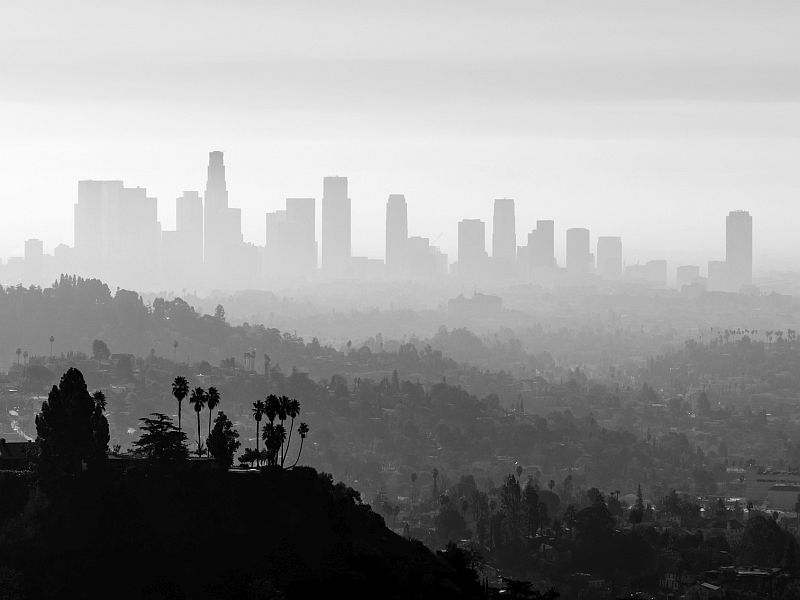
Tuesday, April 12, 2016

TUESDAY, April 12, 2016 (HealthDay News) -- Southern California has cleaner air than it did 20 years ago, and children there may be breathing better because of it, a new study suggests.
Researchers found that as the smog over eight Los Angeles-area communities lessened, children became less likely to suffer from bronchitis, congestion and chronic coughs.
The findings, published April 12 in the Journal of the American Medical Association, do not prove that improvements in air quality deserve the credit.
"We're careful to say this is an association. We can't say it's cause-and-effect for certain," said lead researcher Kiros Berhane. He is a professor of preventive medicine at the University of Southern California's Keck School of Medicine, in Los Angeles.
Still, Berhane said, the findings have "a lot of credibility," partly because the study followed children living in the same handful of communities from 1993 to 2012.
And, he said, previous results from the study showed a similar pattern: Kids living in those communities in recent years have stronger lung function, versus their counterparts in the 1990s.
All in all, Berhane said, the study suggests that curbing air pollution may benefit kids' respiratory health.
"To parents, that might sound like something they already knew," he added. "But this gives us scientific evidence."
The findings are based on three groups of children who lived in the same eight communities but were followed over different time frames: 1993-2001; 1996-2004; and 2003-2012.
Over that 20-year period, air pollution levels fell substantially, the study found. "Fine particle" pollution -- which is emitted from cars and industrial sources -- dropped by an average of 47 percent, for instance.
And that reduction, in turn, was linked to a 32 percent decline in "bronchitic" symptoms among children with asthma. Similarly, reductions in another air pollutant -- nitrogen dioxide -- were tied to a 21 percent decrease in bronchitic symptoms among kids with asthma.
According to Berhane, bronchitic symptoms included overt bronchitis (inflammation in the tubes that carry air into and out of the lungs); a daily cough lasting at least three months in a row; and congestion or phlegm that is not related to a cold.
Children with asthma are especially susceptible to those types of problems, Berhane explained.
But the study also found that even among kids without asthma, cleaner air was tied to a decline in bronchitic symptoms.
"That means that living in a cleaner environment may have a positive impact on children's respiratory health, whether they have asthma or not," Berhane said.
Dan Greenbaum, president of the nonprofit Health Effects Institute, in Boston, noted that many U.S. children have asthma. So any measures that improve their health would have a big public health impact, he said.
"But this study suggests that above and beyond kids who've been diagnosed with asthma, there are subgroups of other children who are at risk from air pollution, and may benefit from better air quality," said Greenbaum, whose organization partly funded the research.
The Los Angeles area was once notorious for its smog. But in the past 20 years, California has passed tougher vehicle-emissions standards, and tried to rein in pollution from the large ports outside Los Angeles and Long Beach.
The latest findings suggest those measures may be helping kids breathe easier, Berhane said. But, "that doesn't mean we should become complacent," he added.
"In California, the number of cars on the road is always increasing," Berhane pointed out. "And we expect more activity at the large ports."
Plus, Los Angeles and other parts of Southern California remain prominent on the American Lung Association's "most polluted cities" lists.
The study's implications, however, extend far beyond Southern California, according to Greenbaum. He said it's likely that children elsewhere would show similar health benefits from cleaner air.
"There's no reason to believe that this wouldn't apply to other regions in the U.S.," he said.
SOURCES: Kiros Berhane, Ph.D., professor, preventive medicine, University of Southern California Keck School of Medicine, Los Angeles; Daniel Greenbaum, president, Health Effects Institute, Boston; April 12, 2016, Journal of the American Medical Association
HealthDay
Copyright (c) 2016 HealthDay. All rights reserved.
News stories are provided by HealthDay and do not reflect the views of MedlinePlus, the National Library of Medicine, the National Institutes of Health, the U.S. Department of Health and Human Services, or federal policy.
- More Health News on:
- Air Pollution
- Children's Health
- Lung Diseases





























.png)











No hay comentarios:
Publicar un comentario